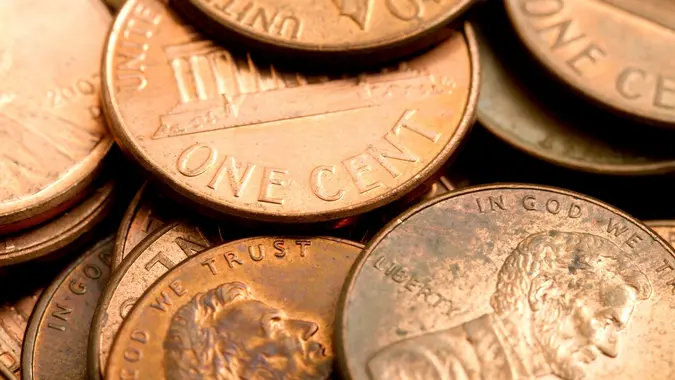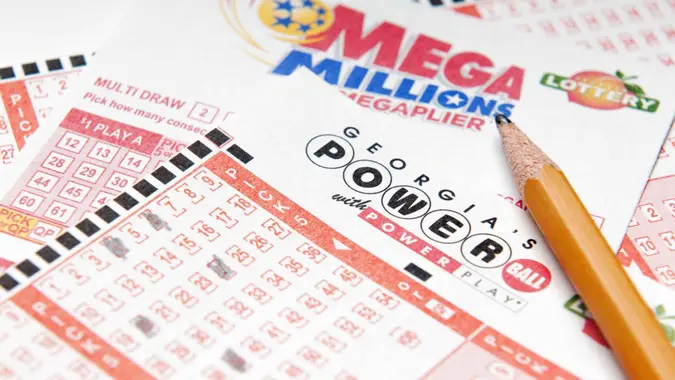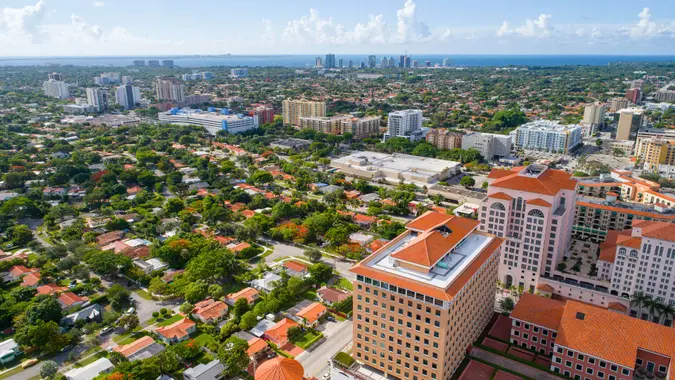Why Are Gas Prices So Expensive? Every Reason, Explained

Commitment to Our Readers
GOBankingRates' editorial team is committed to bringing you unbiased reviews and information. We use data-driven methodologies to evaluate financial products and services - our reviews and ratings are not influenced by advertisers. You can read more about our editorial guidelines and our products and services review methodology.

20 Years
Helping You Live Richer

Reviewed
by Experts

Trusted by
Millions of Readers
The journey of gas prices from a low of $3.07 a gallon in mid-January to current prices of $3.41 in March has left many drivers feeling the pinch. But why is gas so expensive? The fluctuation in price is influenced by several factors extending beyond the gas pump. Keep reading to uncover the driving forces behind gas price hikes and how these elements collectively affect both your daily commute and your wallet.
Why Is Gas So Expensive?
The escalation in gas prices can be attributed to a variety of factors like seasonal demands that sway consumption patterns to the intricate workings of global oil markets and refinery operations. Understanding these underlying reasons can provide insight into the dynamics of gas pricing.
Seasonal Demand and Fuel Blends
The transition from winter to summer not only brings about a change in weather but also a switch in fuel blends. These summer blends are engineered to lower evaporative emissions that significantly contribute to smog during warmer months. Although beneficial for the environment, these blends require a more complex refining process, thereby elevating production costs. This annual shift directly influences fuel prices at the pump.
Also, when it gets warmer, people like to travel more. Whether it’s road trips or vacations, the demand for gas jumps. This extra demand is another reason gas prices tend to rise as the weather gets warmer, something that happens almost every year.
Refinery Challenges
Refineries, where gas is made, also face their own challenges. Scheduled maintenance is a routine necessity, temporarily reducing the amount of gas produced. Additionally, unexpected events like extreme weather can further disrupt operations.
A prime example of this is the Whiting refinery, the largest in the U.S. Midwest, which processes over 400,000 barrels of oil daily. When it had to shut down due to extreme cold, its extended closure for safety checks and restart processes significantly cut into crude oil consumption. This reduction in production capacity can lead to tighter gas supplies in certain regions, pushing prices upward.
The Role of Oil Prices
The price of crude oil, which is what gas is made from, has been pretty stable lately. Groups like OPEC+ work hard to make sure there’s just the right amount of oil available, so prices don’t swing too much. Even with all the problems around the world, like the conflict in Eastern Europe, the price for a barrel of oil in the U.S. has stayed around $80. This shows that, for now, there’s a good balance between how much oil is available and how much people need.
Future Gas Price Trends
With summer on the horizon, a period known for its rise in travel and fuel demand, experts from GasBuddy are predicting gas prices might approach the $4 per gallon mark. While this means drivers may not see the relief they’re hoping for, it also suggests they might not face the extreme spikes in prices that have happened before. It’s wise to start budgeting now for higher fuel costs during the warmer months.
Good To Know
Even though things look okay for now, the oil market can be unpredictable. Big, unexpected events like conflicts in oil-producing areas, problems at major oil refineries or big natural disasters could suddenly make gas prices jump. It’s a reminder that things can change quickly when it comes to how much gas costs.
Final Take
So why is gas so expensive? It boils down to increased demand during certain times of the year, how much gas refineries can produce and the state of the global oil market. While the recent rise in gas prices can be worrisome, recognizing these factors shows it’s part of a regular pattern. As the year progresses, there’s a possibility for gas prices to stabilize, barring any significant, unforeseen disruptions to the market.
FAQ
Here are the answers to some of the most frequently asked questions about gas prices.- Why is gas getting so expensive?
- Gas prices fluctuate due to a combination of factors, including increased demand during warmer months, disruptions or limitations in refinery operations and changes in global oil prices. Seasonal transitions to summer fuel blends, which are more costly to produce, also contribute to higher prices at the pump.
- Why is oil going up in price?
- Oil prices can rise for various reasons, such as production cuts by major oil-exporting countries, geopolitical tensions that threaten supply and global economic recovery leading to higher demand. However, in recent times, oil prices have been relatively stable despite these factors.
- Does the government control gas prices?
- No, the government does not directly control gas prices. Gas prices are largely determined by market forces, including supply and demand dynamics within the global oil market. However, government policies and regulations can indirectly influence costs, such as environmental standards for fuel production or taxes on gasoline.
- What's the future of gas prices?
- Predicting the exact future of gas prices is challenging due to the volatility of the factors involved. However, based on current trends and expert analyses, gas prices are expected to stabilize and potentially decrease after the seasonal spike. Prices are likely to stay below the record highs of 2022, barring any unforeseen major global events that could disrupt supply or dramatically increase demand.
Data is accurate as of March 14, 2024, and is subject to change.
Editor's note: This article was produced via automated technology and then fine-tuned and verified for accuracy by a member of GOBankingRates' editorial team.
Our in-house research team and on-site financial experts work together to create content that’s accurate, impartial, and up to date. We fact-check every single statistic, quote and fact using trusted primary resources to make sure the information we provide is correct. You can learn more about GOBankingRates’ processes and standards in our editorial policy.
 Written by
Written by 

























